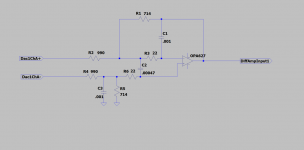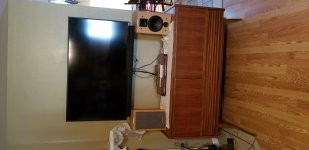Having finished a modified curved wall version of the Zaph Audio ZRT 2.5 towers a year ago I have caught the bug and have been planning my next build. I want to build from scratch without a kit. Designing a passive crossover seemed a bit too daunting so I decided to go with an active crossover and make use of a miniDSP 10x4 HD.
Below is a picture of my Curved ZRT’s. I am really happy with the sound that these things produce, they have replaced Dynaudio Contour 1.4LE’s (and Contour 1.8 v2 before that) and are a major step up from either.
Curved Zaph Audio Based ZRT 2.5 - Google Photos
With the ZRT I laminated the sides with seven layers if 3mm MDF to get the curve. This time I need to build multiple chambers, so thought I would try building it up as a series of 25mm horizontal sandwich slices. I am using dowel spines around the outside in order to provide support, and to help line everything up. Not the most economic method as there is a lot of waste, and there is a lot of routing involved, however it does give me a great deal of freedom in the design.
Sketchup design
Google Photos
For this build I have chosen the following drivers installed in this configuration
Upper Bass - ScanSpeak 22W/8851T-00 8"Revelator Woofer
Midrange - ScanSpeak 12MU/8731T-00, 4" Illuminator Midrange
Tweeter - ScanSpeak D2908/7140 Beryllium Dome Revelator Tweeter
Midrange – Another 12MU/8731T-00 wired in Parallel with the one above (MTM)
Lower Bass - ScanSpeak 32W/4878T Revelator 13" Subwoofer
A few pictures of the build so far
Hugh stack of around 100 slices of 25mm MDF ready to start assembling, will cut out the centres as I build it up..
Google Photos
Starting to come together this is the main chamber for the Scan-Speak 32W/4878T Revelator 13" Subwoofer. The port can be seen coming up from the bottom of the chamber, it will be a L slot that comes out the front below the chamber.
Google Photos
By cutting as a series of slices, bracing is pretty easy to include in any shape I want, this one is designed to go around the back of the 32W
Google Photos
The small cylindrical chamber is for a Scanspeak Illuminator 12MU/8731T-00, 4" Midrange. There will be two of these, another above the tweeter in a MTM D'Appolito arrangement. I made it this shape as from what I have read it produces less internal reflections.
https://photos.app.goo.gl/7JkJfan0lMyqGMwp1
https://photos.app.goo.gl/V4Lbr9SwO5uEBpas1
Trying to decide where to next, either build the base/port assembly or the tweeter section. It is going to be mounted sloped backwards, with the tweeter section vertical and the upper section sloped forward. The next stages therefore involve creating a wedge structure for each end.





